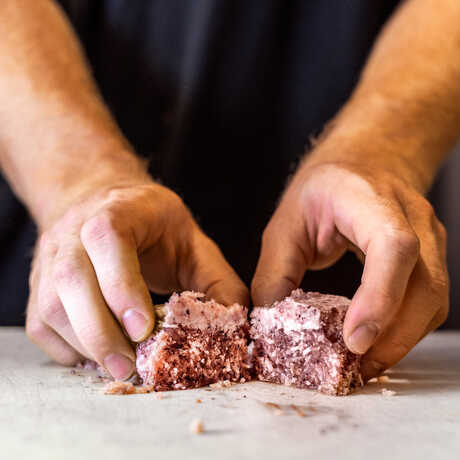Curator Crossover: So an Art Curator Walks into a Science Museum...

What’s an art curator doing at the California Academy of Sciences? I was recently invited to swap places with a Cal Academy curator for the day and train my art-historical eye on the museum’s teeming habitats. As I observed the painterly palettes and sculptural forms of colorful creatures, including fish, invertebrates, and reptiles, I was reminded why so much art is inspired by the natural world. Let’s dive in.
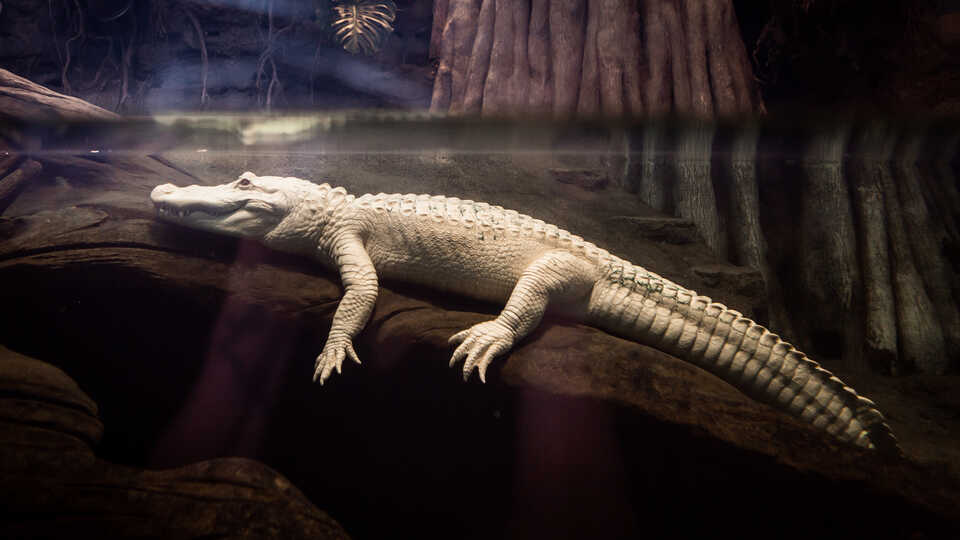
American alligators (Alligator mississippiensis) with albinism rarely survive to adulthood in the wild. Claude enjoys a leisurely lifestyle in the Swamp exhibit. Gayle Laird © 2020 California Academy of Sciences
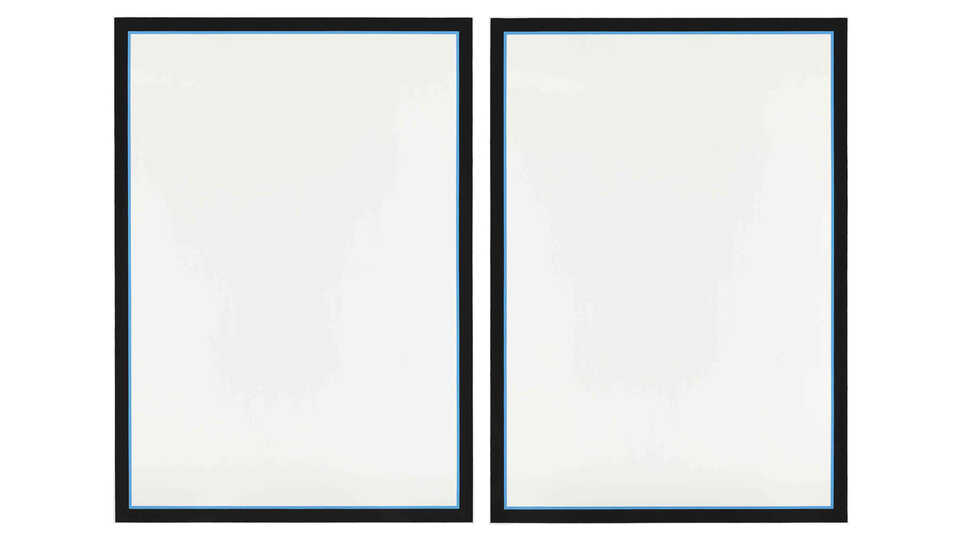
Jo Baer, Untitled (Vertical Flanking Diptych-Blue), 1966-1969. Acrylic on canvas, 96 x 136 in. (243.8 x 345.4 cm). Fine Arts Museums of San Francisco, Gift of Diane B. Lloyd-Butler, 2005.27a-b. Photograph by Jorge Bachmann, courtesy of the Fine Arts Museums of San Francisco
Let’s be honest: Claude, the Academy’s American alligator with albinism, is the star of the show. When I think about an artwork in our collection that resonates with Claude’s stark palette, I think of an untitled Minimalist painting by Jo Baer (b. 1929) from 1966–1969. It consists of two canvases that are white with a very subtle edging of black and blue. But it’s the absence of color that really defines them, just as it’s Claude’s lack of pigment that makes him stand out.
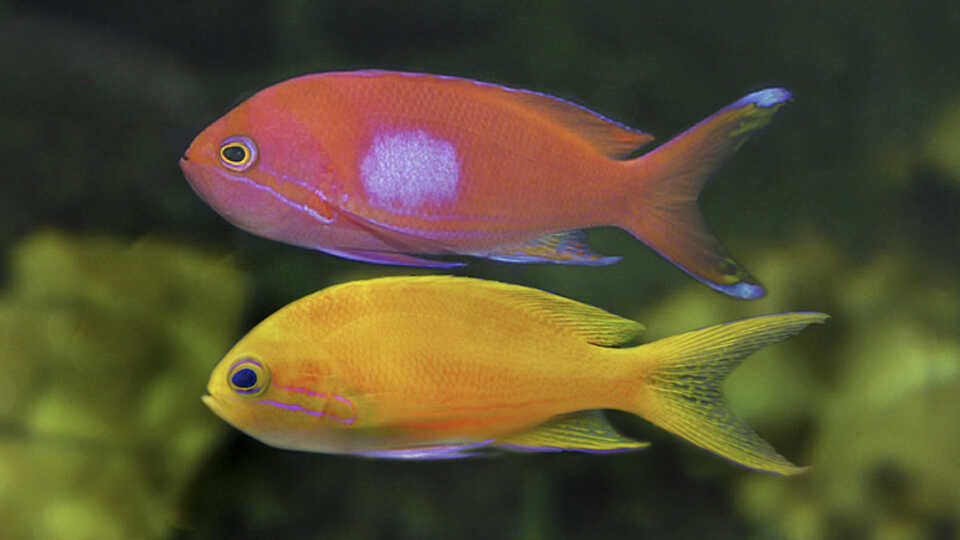
"Square-spot fairy basslet" is a wonderful name for a fish—and also a mouthful. These luminous coral reef residents, with their vibrant color contrasts, make me think of Color Field artist Mark Rothko (1903–1970), who incorporated thinly painted, soft-edged rectangles and squares into compositions with brilliant tonal harmonies. Rothko’s canvases offer viewers an almost spiritual confrontation with color, similar to the feeling you get from watching these fish—a very moving experience.
Ron de Cloux © California Academy of Sciences
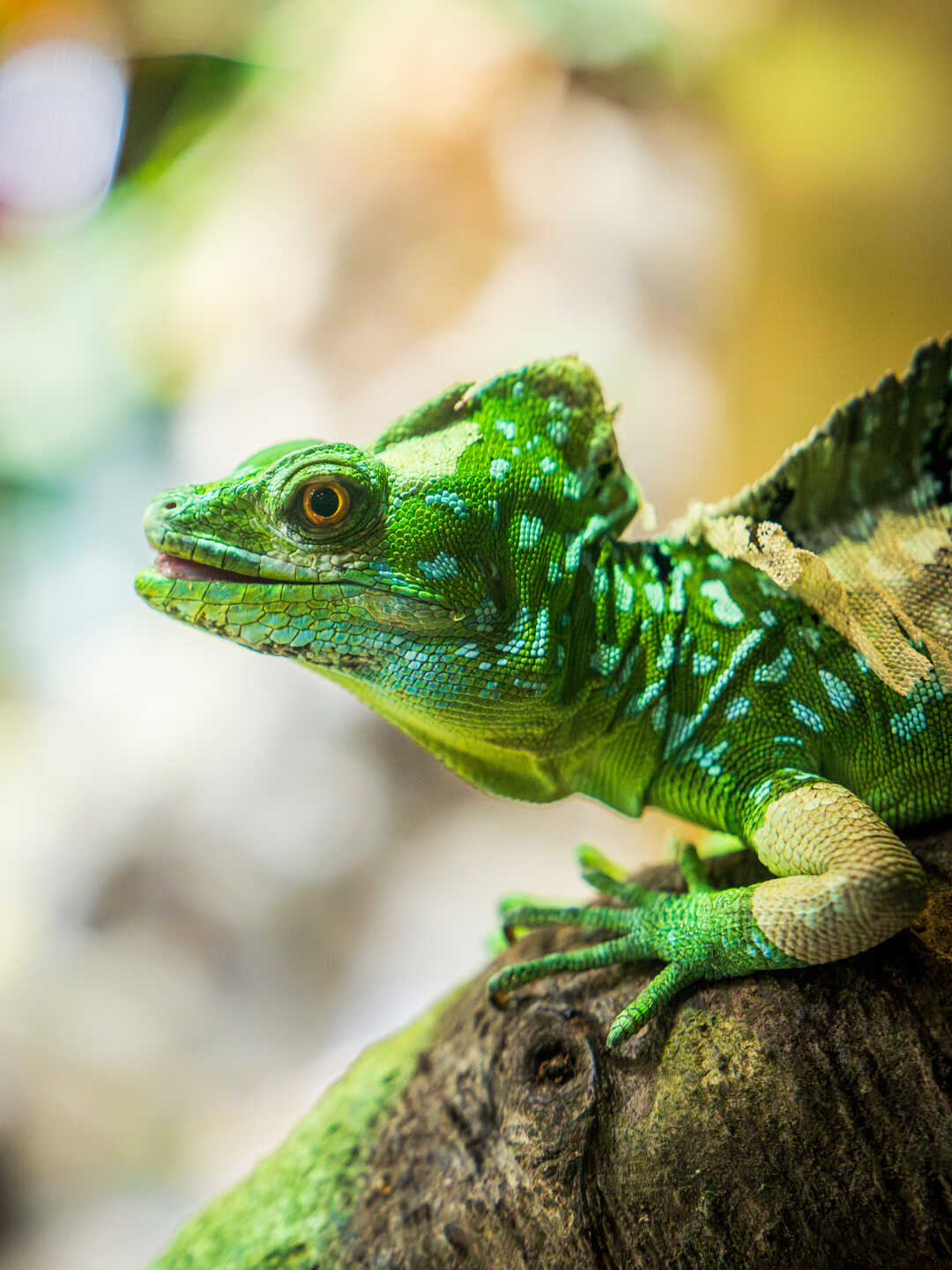
Green-crested basilisks (Basiliscus plumifrons) boast the remarkable ability to run across water for short distances. Find one in the Amazon Flooded Forest gallery, just outside the Osher Rainforest exit. Gayle Laird © 2024 California Academy of Sciences
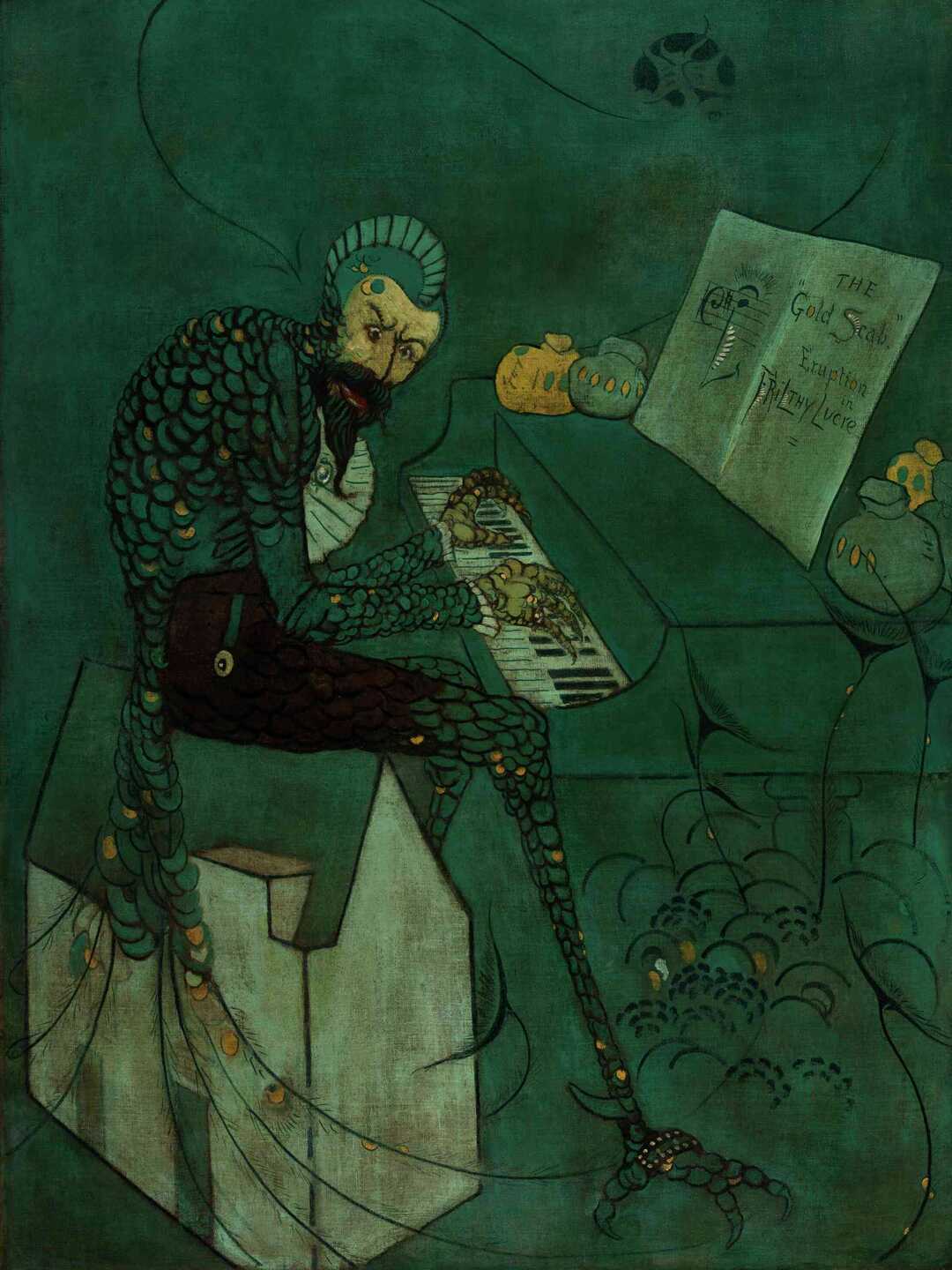
James Abbott McNeill Whistler, The Gold Scab: Eruption in Frilthy Lucre (The Creditor), 1879. Oil on canvas, 73 1/2 x 55 in. (186.7 x 139.7 cm). Fine Arts Museums of San Francisco, Gift of Mrs. Alma de Bretteville Spreckels through the Patrons of Art and Music, 1977.11. Photograph by Randy Dodson, courtesy of the Fine Arts Museums of San Francisco
While far more handsome, this arresting lizard makes me think of the scaled creature—part human, part reptilian peacock—featured in The Gold Scab by American artist James McNeill Whistler (1834–1903). The monstrous figure is a caricature of Whistler’s patron, the British shipping tycoon Frederick R. Leyland (1831–1892), who became a creditor when Whistler went bankrupt. Leyland had earlier commissioned the artist to design the famous Peacock Room, now housed at the National Museum of Asian Art.
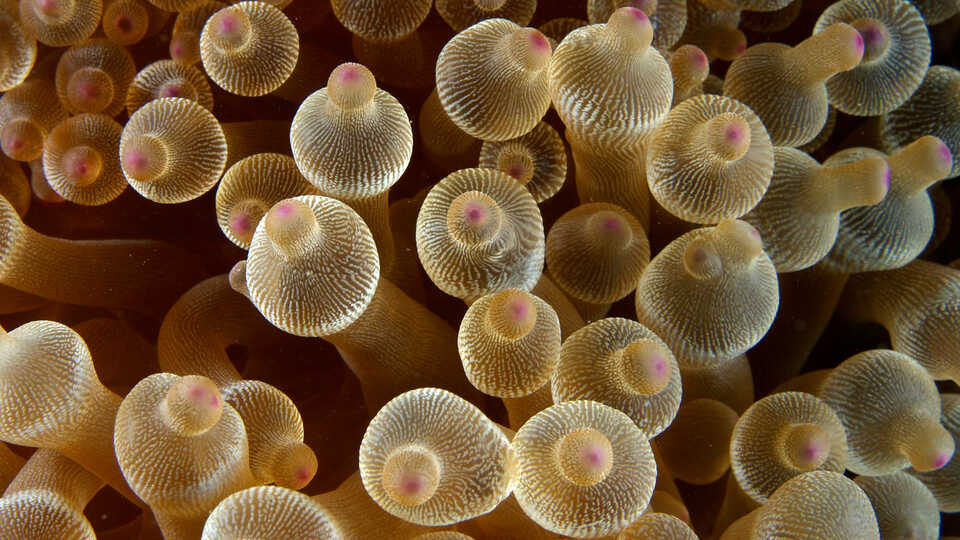
The delicate forms of these magnificent anemones remind me of the looped-wire sculptures of San Francisco artist Ruth Asawa (1926–2013), which you can visit for free in the tower lobby at the de Young. Asawa drew on her artistic training at Black Mountain College, as well as traditional basket-looping techniques she observed in Toluca, Mexico, to create hanging sculptures with interconnected and overlapping silhouettes that evoke the beauty and intricacy of the natural world.
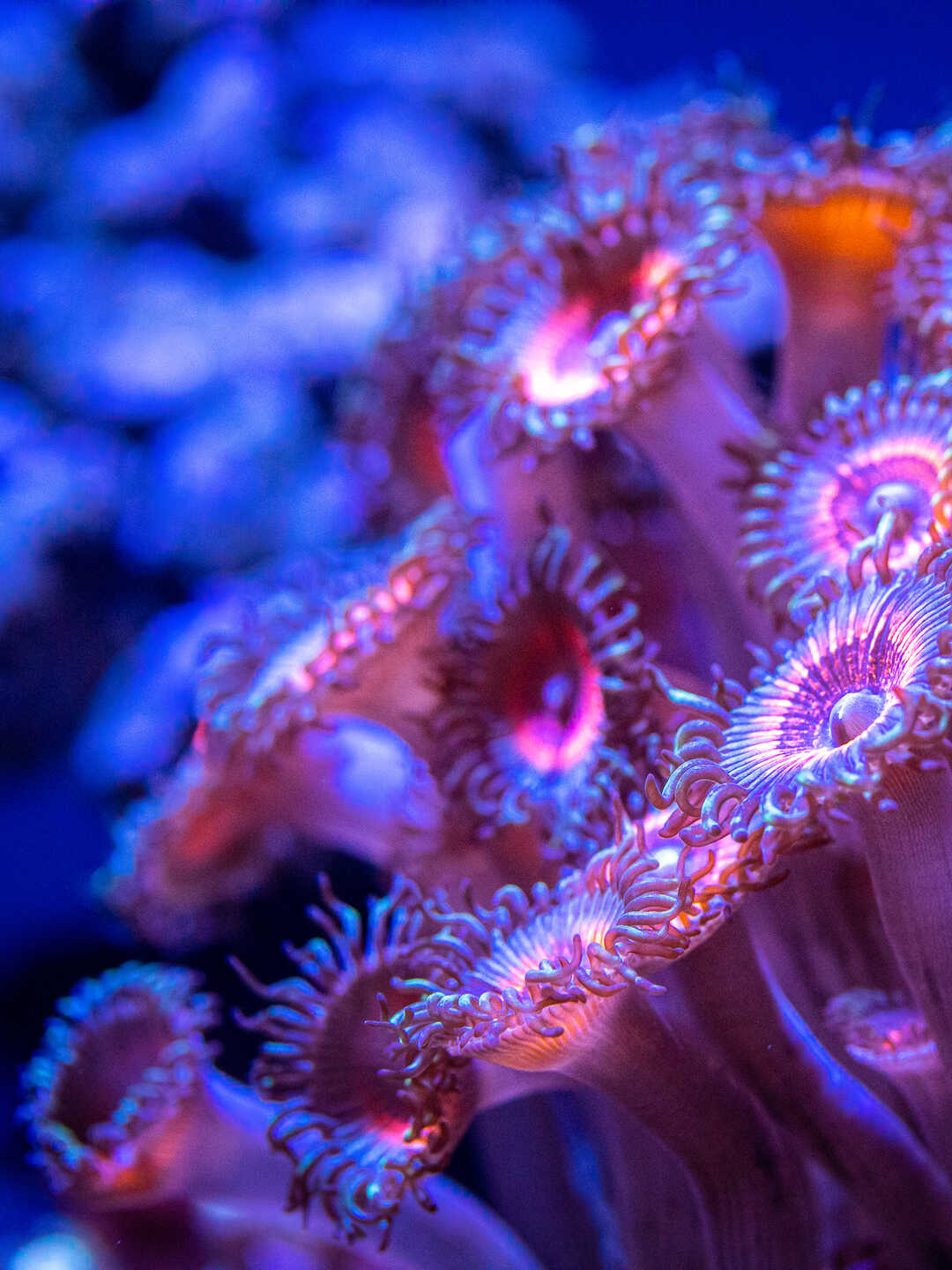
Zoanthids (Palythoa sp.) are colorful corals protected by highly toxic tentacles. Find them in Hidden Reef and look for a related species in Venom: Fangs, Stingers, and Spines. Gayle Laird © 2021 California Academy of Sciences
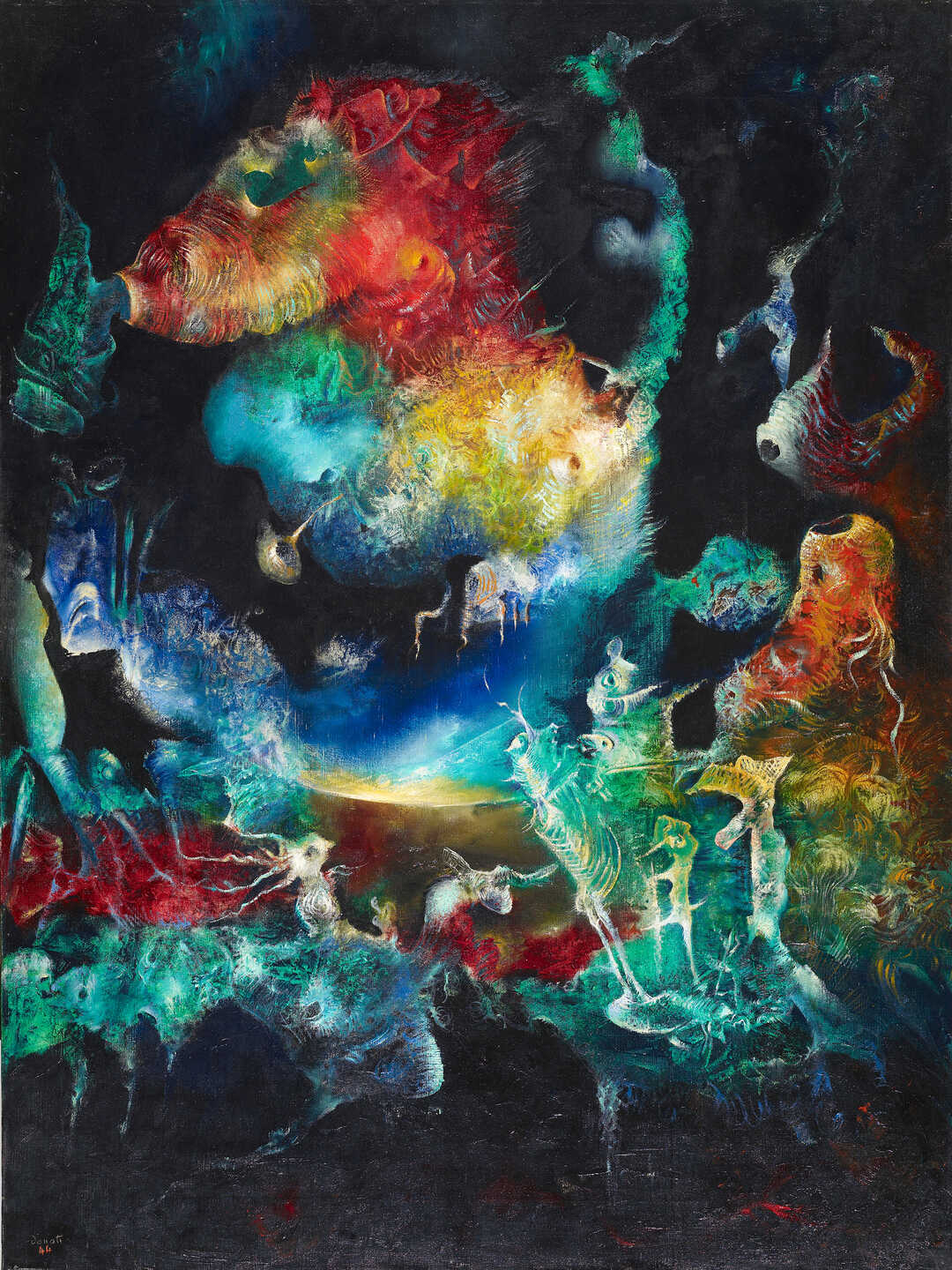
Enrico Donati, Trouble-fete, 1944. Oil on canvas, 40 x 30 in. (101.6 x 76.2 cm); Frame: 44 1/8 x 34 1/8 x 1 1/2 in. (112.1 x 86.7 x 3.8 cm). Fine Arts Museums of San Francisco, Gift of the Artist, 2007.46.1. ©️ Estate of Enrico Donati. Photograph courtesy of the Fine Arts Museums of San Francisco
This habitat within the Hidden Reef exhibit is absolute eye candy, a riot of texture and color—I love all the neon. It has a profusion of pretty strange-looking forms to my untrained eye, including a school of downward-facing shrimpfish. This otherworldly quality makes me think of some of the Surrealist compositions in the de Young’s collection, including some stellar examples by the artists Enrico Donati (1909–2008) and Yves Tanguy (1900–1955). Tanguy’s From One Night to Another (1947) features an alien terrain that conjures an unspecified dreamscape. With the smooth application of paint, you even feel like you could be underwater. “Hidden Reef” is its own fantastic landscape, and I could spend all day immersed in it.
My expedition to the Cal Academy reminded me of nature’s power to inspire—I certainly was awed. Want to continue the crossover? Read about Cal Academy scientist Jack Dumbacher’s adventure at the de Young.


